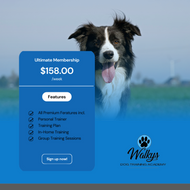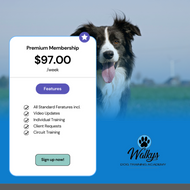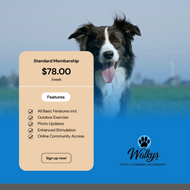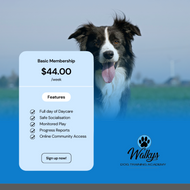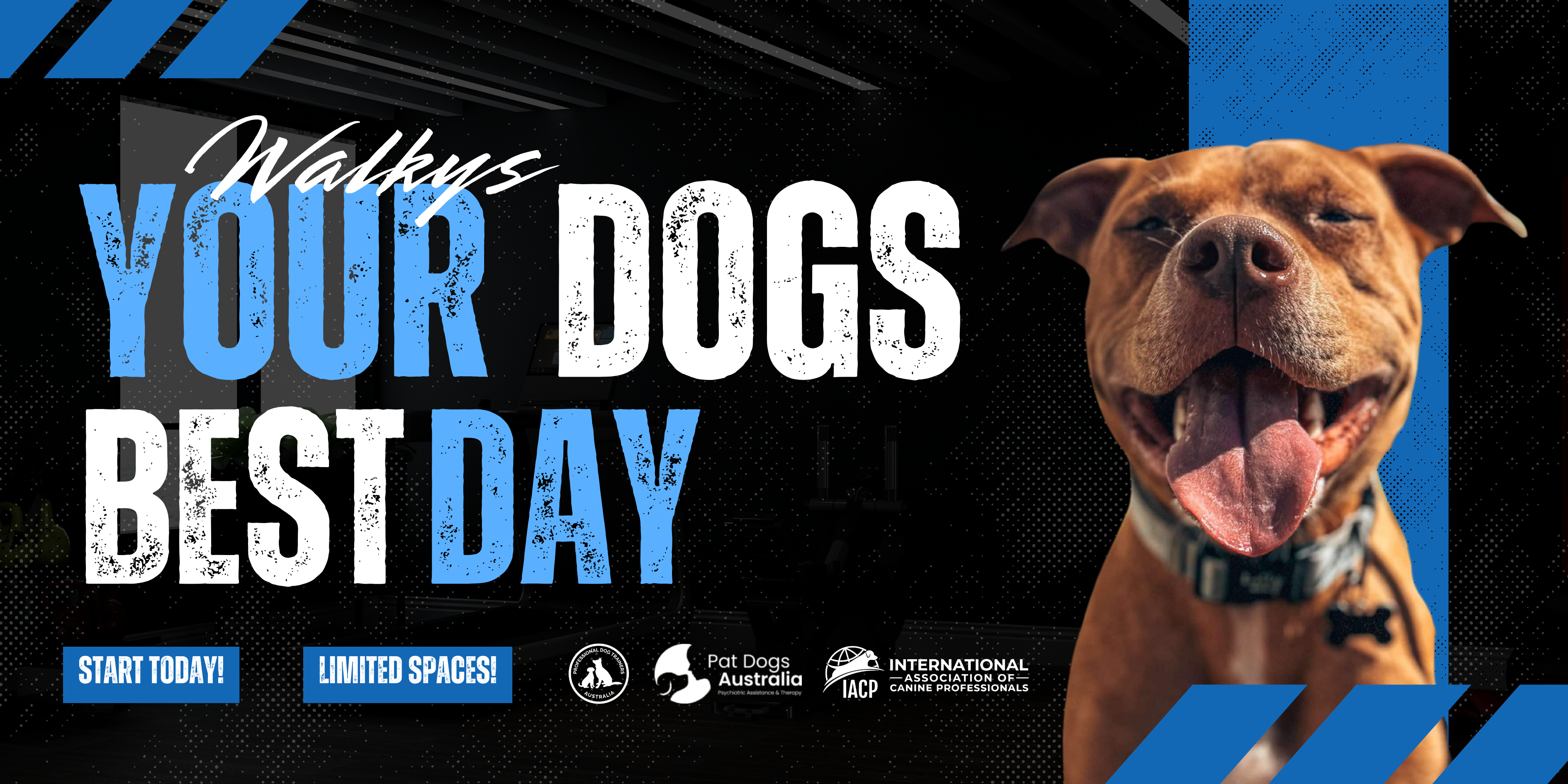

November 1, 2024
The Essential Guide to Choosing the Right Dog for Your Lifestyle and Family
Selecting a dog is a major decision that will affect both your lifestyle and the dog’s quality of life. Finding a breed whose needs align with your living environment and daily routines can lead to a harmonious relationship, fewer behavioural issues, and a healthier, happier life for both you and your pet. This guide will help you make an informed decision, covering everything from temperament to grooming requirements.
Understanding the Commitment of Dog Ownership
Before diving into specifics, it’s essential to understand the responsibilities of dog ownership. Dogs need time, consistent training, exercise, grooming, medical care, and socialisation. Understanding these needs and assessing them realistically helps ensure that the dog you choose will thrive in your home environment.
Assessing Your Lifestyle: The Foundation of Your Choice
Each dog breed has unique traits and needs. Carefully evaluating your daily routines, family dynamics, and living space is crucial to identifying which dog may fit best with your lifestyle.
1. Activity Level
Dogs vary significantly in their exercise requirements. Some breeds need rigorous physical activity each day, while others do well with a gentler pace. If you have an active lifestyle and enjoy outdoor activities, consider a high-energy breed that will thrive with extensive exercise, like the Kelpie. For those with a more relaxed lifestyle, breeds such as Bulldogs or Pugs require less activity and may suit you better.
2. Living Space
Your living space can also play a major role in determining a suitable breed. Smaller dogs or breeds that adapt well to limited space, such as the Cavalier King Charles Spaniel, can do well in apartments if they receive daily walks. For those with a house and garden, breeds that enjoy outdoor exploration, like Labrador Retrievers, may be more suitable. Urban dwellers may prefer dogs comfortable with noise and limited outdoor access, while suburban and rural residents can explore larger, more active breeds.
3. Family Dynamics
Households with young children will benefit from a dog that is tolerant, gentle, and patient. Breeds with a reputation for being family-friendly, such as Labrador Retrievers or Beagles, generally handle interactions with children well. Smaller or fragile dogs may not be suitable for families with very young children, as they can be prone to injury. For homes with elderly family members, consider breeds that are low-energy and calm, like the Cavalier King Charles Spaniel.
Temperament and Behavioural Traits
1. Social Disposition
Some dogs are naturally friendly and open to social interactions, while others may be more reserved or independent. Friendly breeds like Golden Retrievers or Cavalier King Charles Spaniels are ideal for homes where socialisation is frequent. Independent breeds, such as the Shiba Inu or greyhound, may be better suited for quieter households with limited need for extensive socialisation.
2. Protective Instincts
Certain breeds, like German Shepherds and Rottweilers, have protective instincts that may require additional training and early socialisation. These dogs can make excellent guardians but need owners who can commit to positive training to balance these instincts. Families looking for a gentler companion may find breeds like the poodle X mix or Beagle better suited for their home environment.
3. Trainability and Intelligence
Intelligent dogs, such as Border Collies, Poodles, and German Shepherds, are quick learners and enjoy mental challenges. While these breeds are highly trainable, they also demand consistent engagement and mental stimulation to stay balanced. Dogs that are easier to train, such as Labrador Retrievers, can be ideal for families or first-time dog owners seeking a cooperative, easy-to-manage pet.
Grooming and Maintenance Needs
Understanding grooming requirements is essential for a dog’s overall health and appearance. Regular grooming prevents matting, maintains coat health, and allows for early detection of skin issues or infections.
1. Coat Type and Shedding
Some dogs have high-shedding coats that require frequent brushing, such as Labrador Retrievers, while others, like the Cavoodle, have coats that may not shed much but require regular grooming appointments to keep them tidy. If you’re concerned about shedding, breeds like Poodles or poodle X mixes may be suitable due to their lower dander levels and lower likelihood of triggering allergies.
2. Drooling and Odour Control
Certain breeds, such as Bulldogs or Saint Bernards, are known for drooling, which can be a consideration if cleanliness is a concern. For those wanting to avoid drooling, consider breeds like the Weimeraner or Poodle, which are less prone to drooling. Additionally, some breeds have a stronger odour due to their coat or natural oils, while others, like Whippets, have minimal odour.
3. Specialised Grooming Needs
Certain breeds, like Pugs and French Bulldogs, require routine cleaning of their facial folds to prevent infections. Dogs with floppy ears, such as Cocker Spaniels, are more prone to ear infections and may require regular ear cleaning, whereas breeds with upright ears are less susceptible.
Considering Health and Longevity
1. Breed-Specific Health Conditions
Some breeds are more susceptible to certain health conditions that may require special care or treatment. For example, Dachshunds are prone to back issues, and Bulldogs may experience respiratory challenges. Researching common health issues for each breed helps ensure that you are prepared for potential medical needs and expenses.
2. Lifespan Expectations
Life expectancy varies by breed, with smaller dogs typically living longer. For instance, smaller breeds like the Maltese Terrier can live well over 15 years, while larger breeds like Great Danes generally live between 6 and 10 years. Considering breed lifespan compatibility with your long-term lifestyle plans is an essential part of choosing the right dog.
Financial Considerations of Dog Ownership
1. Initial Costs and Adoption Fees
Adoption fees for rescue dogs are generally lower, covering basic vaccinations and spaying or neutering. Purebred puppies from reputable breeders typically involve a higher initial cost, especially for rarer or high-demand breeds.
2. Routine Expenses
Routine expenses, including food, grooming, and medical care, vary by breed. Larger breeds generally have higher food costs, while smaller breeds may need more frequent grooming. Budgeting for these expenses helps ensure your chosen breed fits within your financial means.
3. Emergency and Long-Term Healthcare
Unexpected medical needs can result in substantial expenses, especially for breeds with genetic predispositions. Pet insurance is a worthwhile consideration for managing unexpected costs, particularly for breeds prone to health issues, offering peace of mind for emergency situations.
Choosing the Right Dog Breed for Specific Lifestyles
1. For Active Outdoor Enthusiasts
If you enjoy outdoor activities such as hiking, running, or cycling, consider a high-energy breed that can match your pace. Breeds that require and enjoy intensive physical activities like kelpies or other working dogs, will benefit from an active lifestyle and thrive in environments where they can stay fit.
2. For Families with Young Children
Families with young children may prefer breeds with a gentle, patient disposition. Labrador Retrievers and Golden Retrievers are well-suited for family life and can manage the energy of young children. Always supervise interactions between dogs and children to ensure safety and positive experiences.
3. For Individuals with Allergies
Low-allergen breeds like Poodles or the Tamaruke may be ideal for those sensitive to pet dander. These breeds tend to shed less, reducing allergens and making them more comfortable for homes with allergy concerns.
Matching Your Preferences with Breed Characteristics
Once you have evaluated lifestyle factors, list your top priorities, including activity levels, grooming needs, temperament, and long-term health considerations. Reviewing breed characteristics against these priorities will help you find a dog that aligns with your life and preferences.
Conclusion: Making the Right Choice for a Lasting Bond
Choosing the right dog involves a thoughtful assessment of your needs, preferences, and capacity to meet the unique requirements of different breeds. By understanding factors such as activity level, temperament, grooming, and health, you can lay the foundation for a meaningful and enduring relationship with a dog that complements your lifestyle. This approach ensures a positive bond, providing joy, companionship, and loyalty for years to come.



